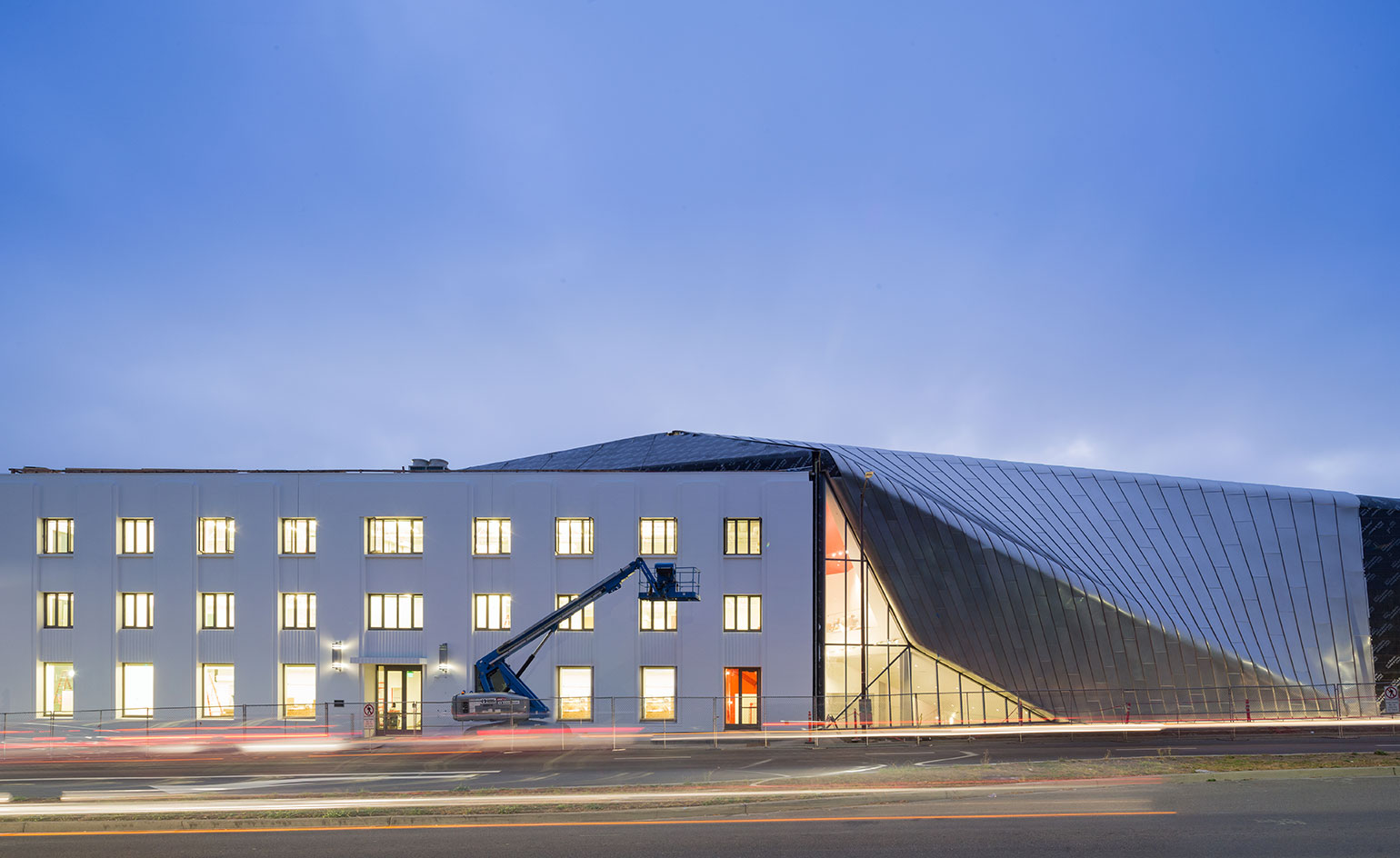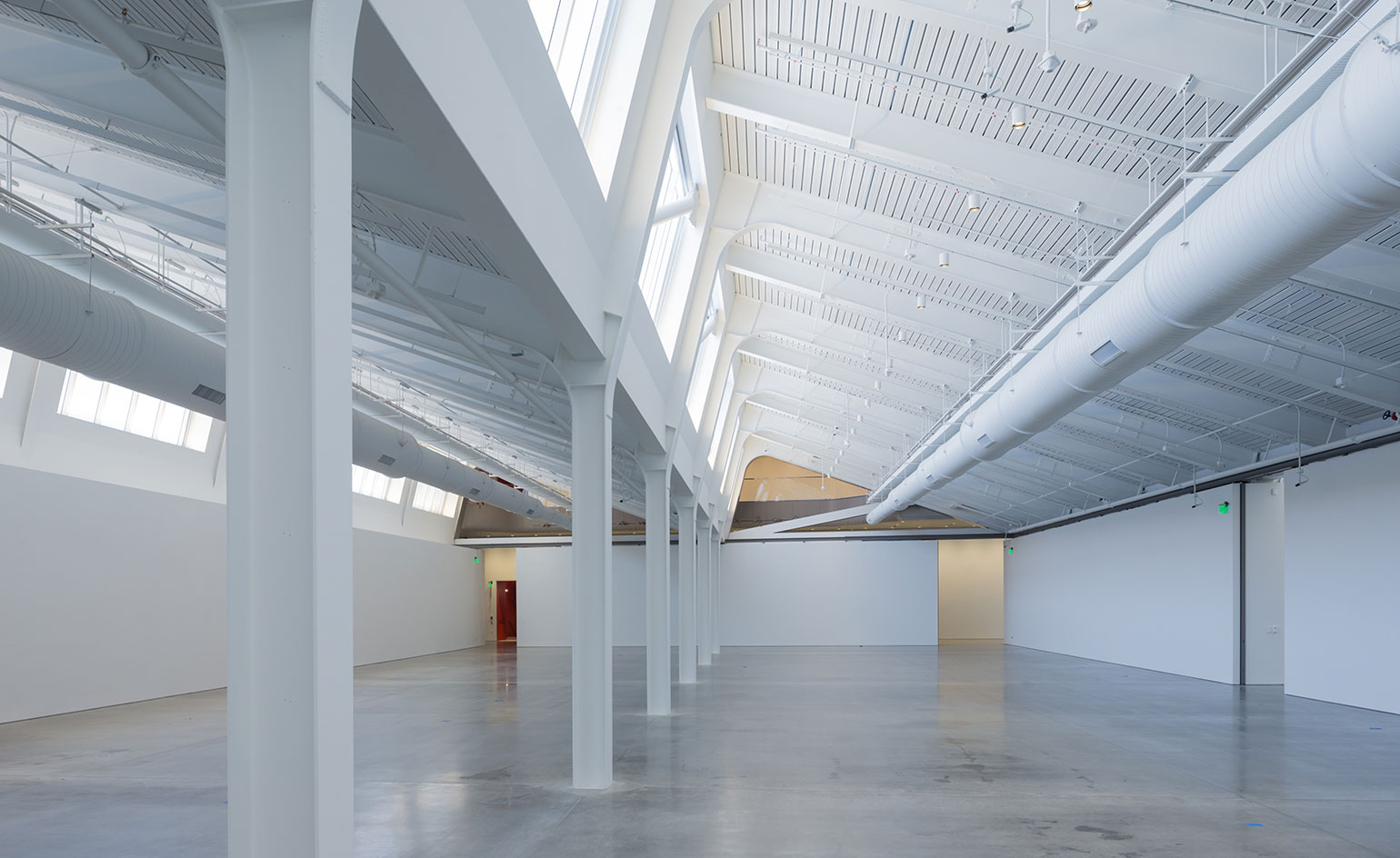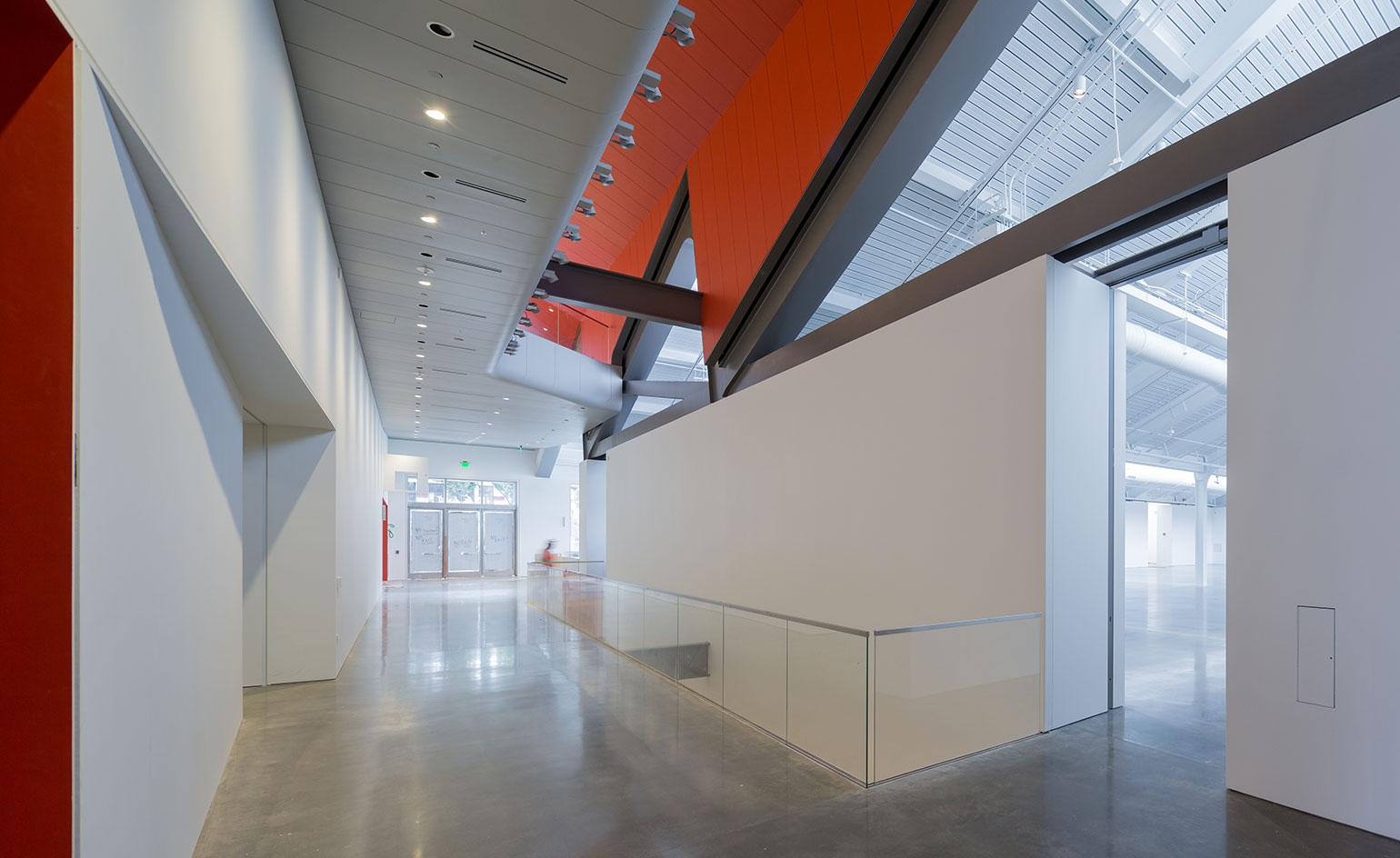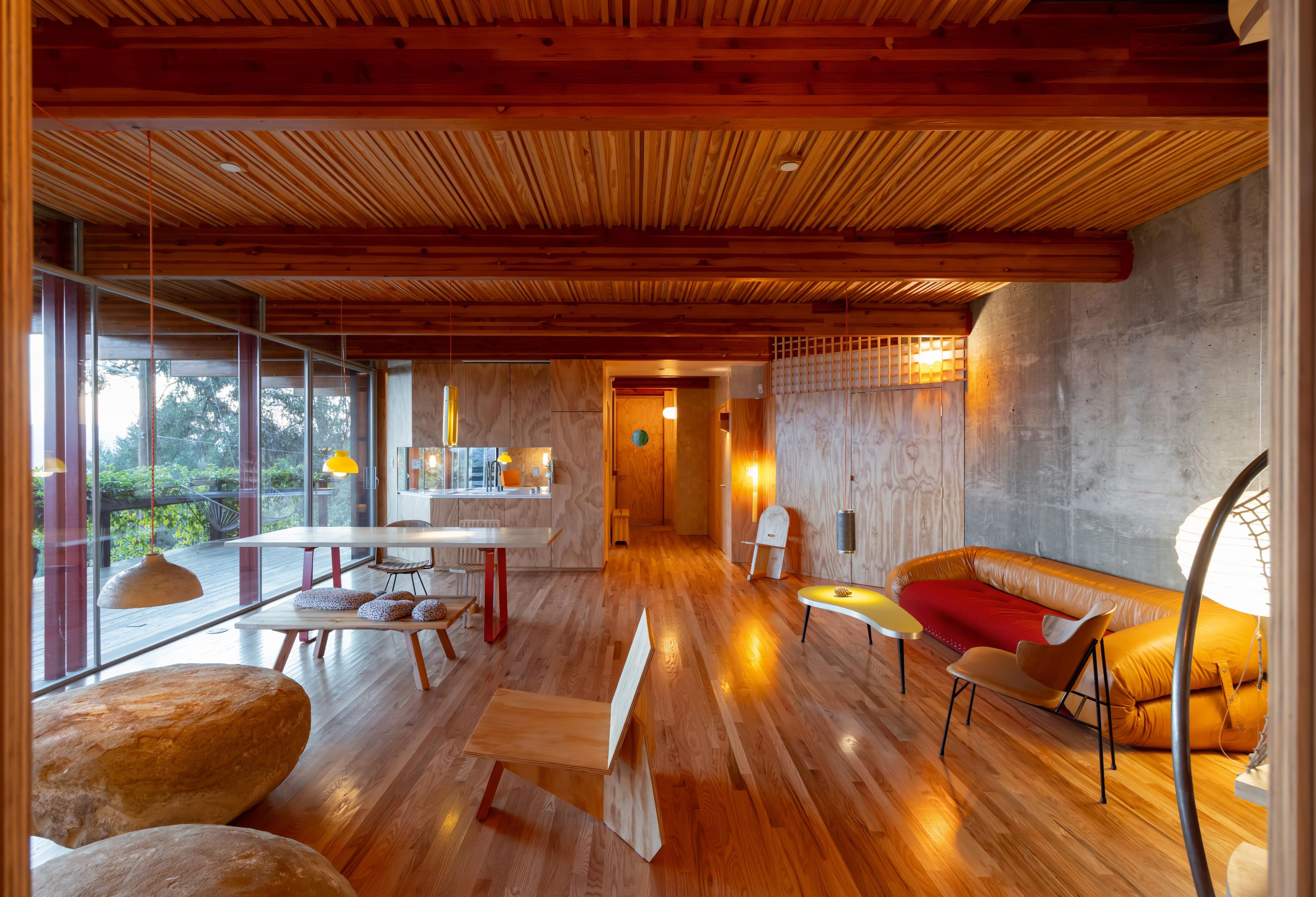Preview: the Bay Area gears up for the new BAMPFA by Diller Scofidio + Renfro

While there's still four months to go until its official grand opening in January, the new Berkeley Art Museum and Pacific Film Archive [BAMPFA] is shaping up to be a blockbuster addition to the Bay Area's active creative scene.
In an inspired case of adaptive reuse, Diller Scofidio + Renfro have transformed a 1930s-era former printing plant into an expansive, multifaceted ode to multimedia. What once was a kind of 'bunker,' says BAMPFA Director Larry Rinder, is now a fully fenestrated, natural-light-filled haven that achieves the dual goals of accessibility and transparency, guided by a serene sense of flow and interplay from the exterior, and throughout the interior. Coupled with the bold red and grey highlights, it achieves an almost 2001: A Space Odyssey-like effect.
The existing buildings included a disused factory and adjacent office. They were largely intact, but beset by seismic structural issues - a major factor in the earthquake-prone Bay Area - and abandoned for years in the centre of the bustling downtown college city. Diller Scofidio + Renfro kept the original structures, complete with Art Deco inflections and a trio of skylight bays in the expansive main event space, and united them with a second-story cafe 'dropped' in between. This angular addition cantilevers out over Center Street and cuts a modern silhouette against the backdrop of a clear blue sky.
Excavating the entire footprint doubled the square footage, and allowed for a series of subterranean spaces that include four additional galleries in the more traditional, four-white-wall style, as well as study centers with resources once only available to specialists. 'The goal is to store and preserve artifacts, but also allow people to engage with art in ways they haven't before,' Rinder says.
A pair of purpose-built theaters will offer screenings both intimate - in the smaller, 32-seater - and robust - in a Meyer Sound-optimized auditorium that can accommodate 230 viewers - plus a 12-piece-band for silent film performances. And in dedication to its role as a true boon for the community, a 30-foot-wide LCD screen will adorn the facade on the flip-side, opening up the possibility for '24/7 public programs and screenings,' Rinder says. 'Our role is as a part of the life of the city-and the city doesn't close down at 5pm.'

Scheduled to open officially in 2016, the project is an inspired case of adaptive reuse

The archive will be housed in a transformed 1930s-era former printing plant; including a disused factory and adjacent office

Diller Scofidio + Renfro redesigned the space into a modern, multimedia hub that will be open and accessible to the public

The existing buildings' gallery spaces will now be complemented by a series of subterranean display halls; this was achieved by excavating the entire footprint and doubling the scheme's square footage

An angular addition cuts a modern silhouette for the archive, creating contemporary shapes inside and out
INFORMATION
Photography: Iwan Baan
Receive our daily digest of inspiration, escapism and design stories from around the world direct to your inbox.
-
 Is the Calibri typeface 'woke'? We asked its designer
Is the Calibri typeface 'woke'? We asked its designer'It's more a compliment than something bad for me,’ says the Dutch type designer Lucas de Groot
-
 The Wallpaper* Design Awards are back in 2026 – see who's shortlisted
The Wallpaper* Design Awards are back in 2026 – see who's shortlistedOur annual design awards returns in January – here are the first shortlisted nominees
-
 RIBA House of the Year 2025 is a ‘rare mixture of sensitivity and boldness’
RIBA House of the Year 2025 is a ‘rare mixture of sensitivity and boldness’Topping the list of seven shortlisted homes, Izat Arundell’s Hebridean self-build – named Caochan na Creige – is announced as the RIBA House of the Year 2025
-
 Remembering Robert A.M. Stern, an architect who discovered possibility in the past
Remembering Robert A.M. Stern, an architect who discovered possibility in the pastIt's easy to dismiss the late architect as a traditionalist. But Stern was, in fact, a design rebel whose buildings were as distinctly grand and buttoned-up as his chalk-striped suits
-
 Own an early John Lautner, perched in LA’s Echo Park hills
Own an early John Lautner, perched in LA’s Echo Park hillsThe restored and updated Jules Salkin Residence by John Lautner is a unique piece of Californian design heritage, an early private house by the Frank Lloyd Wright acolyte that points to his future iconic status
-
 The Stahl House – an icon of mid-century modernism – is for sale in Los Angeles
The Stahl House – an icon of mid-century modernism – is for sale in Los AngelesAfter 65 years in the hands of the same family, the home, also known as Case Study House #22, has been listed for $25 million
-
 Houston's Ismaili Centre is the most dazzling new building in America. Here's a look inside
Houston's Ismaili Centre is the most dazzling new building in America. Here's a look insideLondon-based architect Farshid Moussavi designed a new building open to all – and in the process, has created a gleaming new monument
-
 Frank Lloyd Wright’s Fountainhead will be opened to the public for the first time
Frank Lloyd Wright’s Fountainhead will be opened to the public for the first timeThe home, a defining example of the architect’s vision for American design, has been acquired by the Mississippi Museum of Art, which will open it to the public, giving visitors the chance to experience Frank Lloyd Wright’s genius firsthand
-
 Clad in terracotta, these new Williamsburg homes blend loft living and an organic feel
Clad in terracotta, these new Williamsburg homes blend loft living and an organic feelThe Williamsburg homes inside 103 Grand Street, designed by Brooklyn-based architects Of Possible, bring together elegant interiors and dramatic outdoor space in a slick, stacked volume
-
 This ethereal Miami residence sprouted out of a wild, jungle-like garden
This ethereal Miami residence sprouted out of a wild, jungle-like gardenA Miami couple tapped local firm Brillhart Architecture to design them a house that merged Florida vernacular, Paul Rudolph and 'too many plants to count’
-
 Tour Cano House, a Los Angeles home like no other, full of colour and quirk
Tour Cano House, a Los Angeles home like no other, full of colour and quirkCano House is a case study for tranquil city living, cantilevering cleverly over a steep site in LA’s Mount Washington and fusing California modernism with contemporary flair